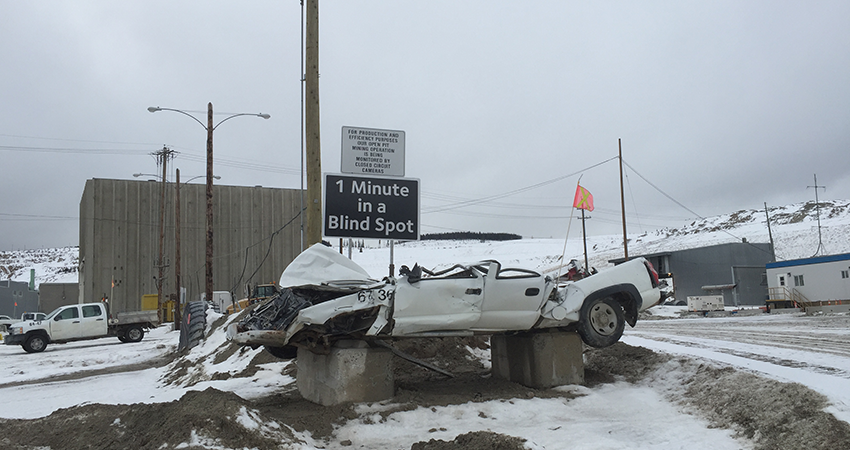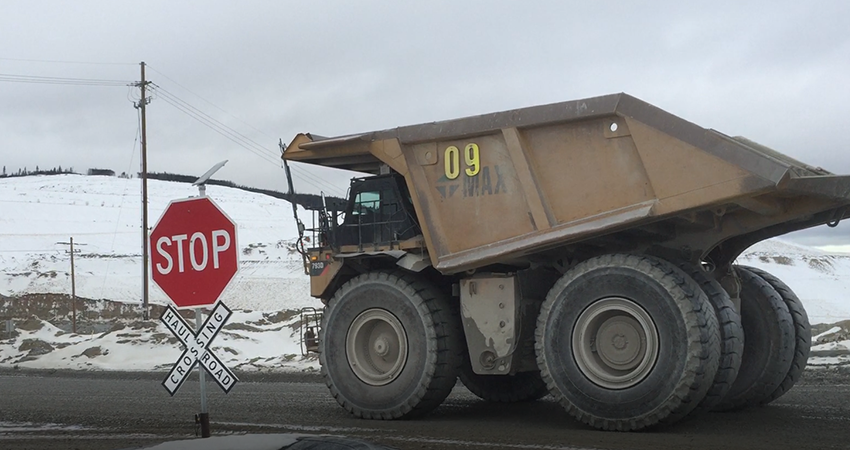Highland Valley Copper’s new service roadway creates safer travel on-site.
An aerial view of a typical mine shows a labyrinth of roadways, shared by equipment and vehicles that move material and people to various areas of the operation and help maintain the site itself.
Unfortunately, shared roadways can create greater shared risk, particularly when it comes to the potential for interaction between mobile equipment and light vehicles.
A new separate service roadway at Highland Valley Copper (HVC)—one that runs the length of the operation—is helping control that risk.
Initiated in 2016, the project developed from HVC’s application of the High Potential Risk Control (HPRC) Strategy. A work team risk assessment performed around heavy vehicle and light vehicle interaction resulted in a challenge of the controls that were then in place and a recommendation to advance a light vehicle road network project to manage the high potential risk of heavy equipment interaction.
From there, teams from across the operation—from mine engineering, environment, and health and safety to site services, mine operations and materials management—came together to design and construct a separate service roadway that would divert traffic from the operation’s haul roads.
Building the roadway was one part of the project. Ensuring people would use it was another. To help manage the change, team-based risk assessments were performed across the operation and a number of groups were engaged to help transition to the new way of navigating the mine site.
Today, the 16-kilometre roadway—one branch of which starts near the security gate and stretches 8.5 kilometres to the Highmont pit while the other branch stretches 7.7 kilometres in the other direction to the H-H Dam—provides drivers with a safer alternative for moving around the property and is diverting more than 200 vehicle trips a day from the operation’s busy haul roads.
A Cost Reduction Success Story
At a time when cost reduction was on everyone’s mind, the HVC team challenged themselves to look for ways to safely reduce the cost of building the new road.
Through collaboration and innovative thinking, the team identified a number of cost-saving measures that brought the project in at almost half of the original budget.
Light Vehicles: Four Principles of Survival
Respect Intersections
Intersections represent the highest risk to light vehicles on site. Navigate your way through them carefully. Understand your position relative to other vehicles and follow site road rules.
Wear Seatbelts
Seatbelts, alongside airbags, assist with helping lessen the impact to the operator or passenger in the event of an accident.
All mobile equipment must have seatbelts—if you find any equipment not meeting requirements, please share with your supervisor.
Teck expects everyone to wear their seatbelts when a vehicle is in operation.
Obey Speed Limits
Speed limits are set for ideal conditions.
Your experience and conditions may limit your ability to drive to these speeds.
Drive within your capability.
Stay Out of Blind Spots
The choice you make on where you park can be catastrophic for you, but can also have the potential to impact our heavy equipment operators for the rest of their lives.
Always consider both the current position and future movement of the heavy equipment.
Choose to:
- Stay out of the line of fire
- Stay in the line of sight
- Ensure heavy equipment is secure
- Consider surrounding equipment



